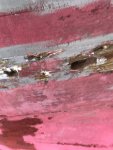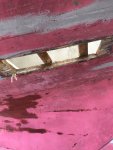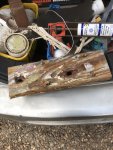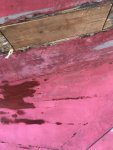Sniper
Member
I have to replace a short bit of planking which has been ruined by the fasteners attaching the anode to the hull - a common occurrence. The plank only needs to be about 18” long, is almost flat and shouldn’t require any edge set. I am unsure whether to work an 8-1 scarph into each end or to use butt blocks. There isn’t a butt block anywhere in the rest of the boat so I assume when she was built they had some 28’ stock to work with.
my inclination is toward scarphed joints with liberal amounts of thickened epoxy to fix, but I’d welcome other views.
my inclination is toward scarphed joints with liberal amounts of thickened epoxy to fix, but I’d welcome other views.





